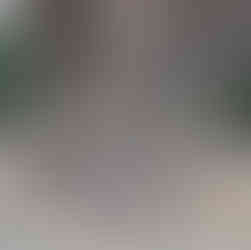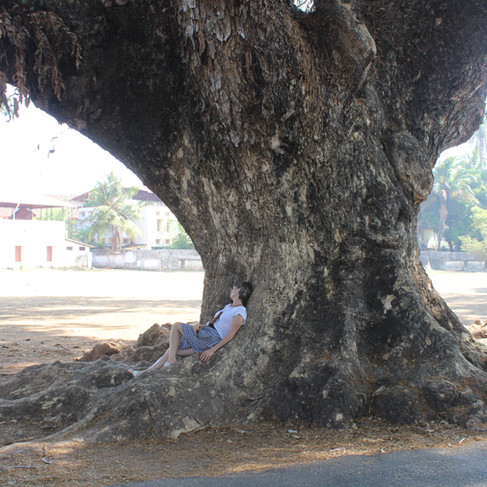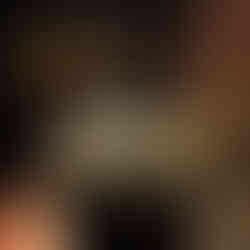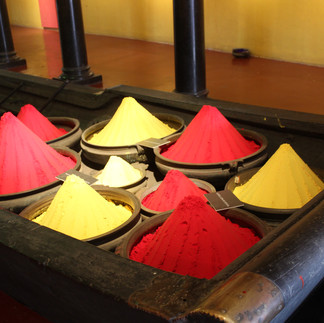Doubting Thomas
- Charles Pither

- Mar 3
- 7 min read
Updated: Mar 4
A letter from Cochin

Dear David,
I was fascinated to be reminded – because you and JP have mentioned it before – that you cycled into Cochin in 1975. How extraordinarily brave. Nobody knew anything about southern India in 1975. Why there?
But how rewarding to cease your pedalling in the old town and sip a beer under the massive parasols of the rain trees (Samanea Saman, you will probably say now David, but you wouldn’t have known that then). You might have watched the fishing boats head out into the Arabian sea at dusk, before finding a bed in a shabby hotel. All that would have been on offer then I suspect, even if you had had more cash. Fifty years! Extraordinary.

Sitting in the cab from the airport I couldn’t help thinking of the changes you would notice, but of one thing rest assured: the charm persists. More people now for sure, (three million and counting) more of them owning motorbikes and cars, clogging the long bridges connecting the islands, more of them in smartish western clothes, all of them with iPhones and many with degrees. A million Tuk-Tuks, (were they here then?) too many tourists now, alongside the mandatory shops catering for their acquisitiveness. Interestingly the Euro-tourists are all from the same demographic: plonky, grey, sceptical but getting persuaded, hanging on to the yoga-pants of a spousal Celia Imrie with a guidebook. And the towering apartment blocks – they are new. Bunches of them standing sentinel in the green waterside spaces, chic and rich, owned by Keralans who have given the best part of their working lives to create the Dubai that we know and hate. What hasn’t changed is the welcome of smiling uniformed fonctionnaires standing by every doorway, white shirts, spotless and pressed, with vests clearly visible underneath. In thirty degrees!
‘Have you noticed anything about Keralan men?’ asks Anoop our driver from the airport.
Carolyn got it in one: ‘you all have moustaches’. And warm smiles, she could have added.
Cochin is unusual in that the old town is Indo-European; the Portuguese, Dutch and then English all shaping the topography. And this started early enough (16th century) that the buildings weren’t plonked on top of earlier Hindu or Mogul architecture; there was no architecture here before. Instead, the city invented itself, with a style mixing Portuguese elements, blue glazed Faience and pantiles, with local materials, in particular stone and hardwoods. The traditional Tharavad is a grand house for a grand family but is little more than an elaborate – and often beautiful – roof frame, atop rendered block walls, finished by pantiles, and many of the lovely older buildings in the Old Fort are Tharavads by any other name. Sit and have a Kingfisher in the luscious gardens of the Old Harbour Hotel and you are indeed charmed. You would be especially as the bird song is raucous and insistent, cutting through even the tuk-tuk of the tuk-tuks.

But what’s all this got to do with our eponymous saint? We all have reason to be grateful to St Thomas. His name is associated with the hospital that has underpinned our careers, and been the cornerstone of lifelong friendships, but also the Kirche in Leipzig where Johan Sebastian was Cantor, the birthplace of the Well-Tempered Clavier and other miracles, and I always smile inwardly at that parallel. But the question today is did he also found Cochin? I don’t mean that – what I mean is did he found a Christian church on the Malabar coast?

Folk myth has it that when Vasco Da Gama arrived on the coast of Coromandel, (presumably in spring, to catch the pumpkins blow) to bring Christianity to the heathens, there was already a church here. In fact, it wasn’t him that arrived early in the age of discovery but another Portuguese seaman, Pedro Cabral who failed to quell the restless locals sufficient to form a colony. Da Gama was summoned and achieved that aim, building Fort Kochi in 1504. Francis Xavier (later canonised) arrived a year or so later with missionary intent and built the first church on the sub-continent, a buttressed hunk of grubby stucco sitting adjacent to our hotel, overlooking the parade ground. Thus started the Portuguese rule of Kerala, which lasted until 1663 when the Dutch bustled in, with the authority of the Dutch East India Company, ushering in the era of enduring Keralan Catholicism.

But back to the notion that there were already Christians in the area. There were certainly Jews. The Keralan Jewish enclave believe that a boatload arrived at Granganore in 72CE, after the sacking of the second temple in Jerusalem two years before, the event which triggered the first Jewish diaspora. There was certainly Roman trade with Malabar at this time with convincing Roman sites excavated by Mortimer Wheeler in the 1930s, so it is not impossible that Jewish families couldn’t have hitched a ride. Flooding and silting up of the river contributed to the community moving to Kochi where there was certainly a synagogue by 1344. Numbers were swelled by further immigration enabling the building of the much-vaunted Paradesi synagogue in 1568, now a cornerstone of the Kochi tourist route, albeit that the last of the Jewish community left a few years ago.
Twenty years ago, William Dalrymple no less, wrote a piece claiming that the Christian community that Da Gama and Xavier found ensconced in the coastal plains of Kerala had been founded by Thomas Didymos, he of doubting fame. The claim has its origins in the firm belief of local churches that Thomas is still amongst them, and St Thomas is the patron saint of India. Legend has it that Thomas arrived in 52CE by boat from Palestine, probably also at Cranganore, the major port for Roman trading of spices, gems and perhaps slave girls. He founded seven churches and performed a miracle or two before paying the ultimate price; his martyrdom in Mylapore, now a suburb of Chennai. Here you will find the church of St Thomas and the spear that killed him, but not the relics of the saint himself which legend has it, were taken to Edessa in what is now Turkey.
Dalrymple presents various convincing arguments: well documented oral history, archaeological evidence and the fact that the early Portuguese authorities, with an inquisitorial venom, destroyed all the records of the early church on the basis that they the members were all heretics. What is surely inescapable however, is that there would have been some mingling of belief and practice between the first century Christians unexposed to St Paul’s Antioch, Greek directed Christianity, and the Jewishness of the Temple and Passover.

Enter the Thomas Doubters: all bunkum says Istwar Sharan in his book The Myth of Saint Thomas and the Mylapore Shiva Temple. Agreed says Koenraad Elst: a load of tosh. Who they? you ask. Haven’t a clue. Suffice to say that there is lots of online debate about the authenticity of the claims about St Thomas, albeit that there probably will never be an agreed answer.
It is a pity that the serene St Francis church in Cochin, with its humble trappings and unembellished simplicity isn’t St Thomas’s church. How sad that a fragment of toenail wasn’t found under a rock that could be linked to a cranky hermit in Bungay who believes he is a direct descendent of the immortal saint. Whatever. It won’t alter the fact that for me a part of this unique city will be forever another marvel under the patronage of St Thomas.
One of the reasons why the city retains its charm is that all the growth has occurred on the landward side in what is now Ernakulam a ferry ride away, across the harbour. The old town hasn’t had to suffer the commercialisation of most burgeoning Indian city centres, instead the harbourside godowns, with their faded but trendy obsolescence, have been hijacked by artists and baristas. They come alive with the Biennale art fair when the fecund local artisans are joined by an international cohort of creative talent. It is remarkable what appears in a southern Indian city that most Europeans have barely heard of.
The cavernous antique warehouses remain and seduce, stuffed with all manner of dusty artifacts, everything looking genuine and inexpensive. But caveat emptor. Most of the genuine pieces are long gone. The first time we visited Cochin we slept in a delicious antique bed in the Malabar House hotel. I was nosing through the back rooms of Heritage antiques and wondered if they had something as nice. The cosmopolitan proprietor, who could just as well have been a hotelier in Leicester or a hedge fund manager in New York, disappointed at my disappointment with his offerings, then said ‘you want something like the one in Malabar House don’t you?’ Taken aback, I had to admit that was on my mind. ‘I will make you one if you want.’
‘But I want an old one,’ I replied.
‘I made the one in Malabar house two years ago,’ was his response.

You would still find many things to your liking here, David. You could find a homestay with antique sanitation unchanged since 1975, or an updated version converted with flair and skill into a boutique hotel. You would be drawn to the ineffable charm of the staff, with their impeccable courtesy and desire to please. You would love the southern Indian food with dosas for breakfast, and you could buy some perfectly peculiar clothing that would keep you eccentrically clad well into your dotage.
But David, it is time for us to uproot and head to the tropical forest of the Wayanad. Our driver is to take us to Ernakulum railway station to catch the Caldicott flier. I suspect that an Indian train trip is one aspect of life in India that hasn’t changed that much.
Salut.






























Charles, What a joy to receive your latest missive to enjoy over my Pancake Day breakfast.
I love your exposure of the fake bed in Malabar House Hotel.
Ernakulum Railway Station has some interesting What3words names.... Gossiping.eternally.addicted
Bon voyage mes amis
Robin x